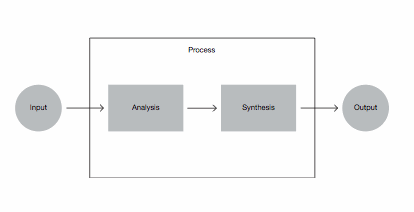An example of analysis and synthesis using the Papanek method
Recently, I described a simple flowchart of the design process of Koberg and Bagnell, in which in the process of solving the problem, its analysis is first carried out (crushing into parts), and then synthesis (collecting parts in a new form).

How to put this into practice? Victor Papanek offers several ways, including using a “paper computer” that generates ideas. In general terms, the process is as follows:
1. We will make several paper “columns” - one for each technical component of the solution to the problem. Then, on each column, we write out all the probable and incredible options for this technical component that are known to us. At this stage, it is not necessary to relate them to the task.

When everything is ready - this is the analysis.
How to carry out the synthesis, read under the cat. If you are interested in other schemes for solving problems or ideas of Papanek, I have some information on the site, including about solutions using bissociations.
2. So, we broke the problem into parts and we need to carry out the synthesis. To do this, we “launch” our paper computer. In a linear or random way, we move all the columns in different positions, and write the resulting combinations in a notebook. These will be the solutions that the computer gave us.

3. All that remains for us is to filter the solutions in several passes. First, remove the most delusional, then difficult to implement, expensive, etc., until we come to a few real options that we will develop.
Note that a paper computer actually replaces our brainstorming in order to develop ideas.

How to put this into practice? Victor Papanek offers several ways, including using a “paper computer” that generates ideas. In general terms, the process is as follows:
1. We will make several paper “columns” - one for each technical component of the solution to the problem. Then, on each column, we write out all the probable and incredible options for this technical component that are known to us. At this stage, it is not necessary to relate them to the task.

When everything is ready - this is the analysis.
How to carry out the synthesis, read under the cat. If you are interested in other schemes for solving problems or ideas of Papanek, I have some information on the site, including about solutions using bissociations.
2. So, we broke the problem into parts and we need to carry out the synthesis. To do this, we “launch” our paper computer. In a linear or random way, we move all the columns in different positions, and write the resulting combinations in a notebook. These will be the solutions that the computer gave us.

3. All that remains for us is to filter the solutions in several passes. First, remove the most delusional, then difficult to implement, expensive, etc., until we come to a few real options that we will develop.
Note that a paper computer actually replaces our brainstorming in order to develop ideas.
